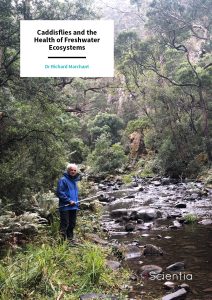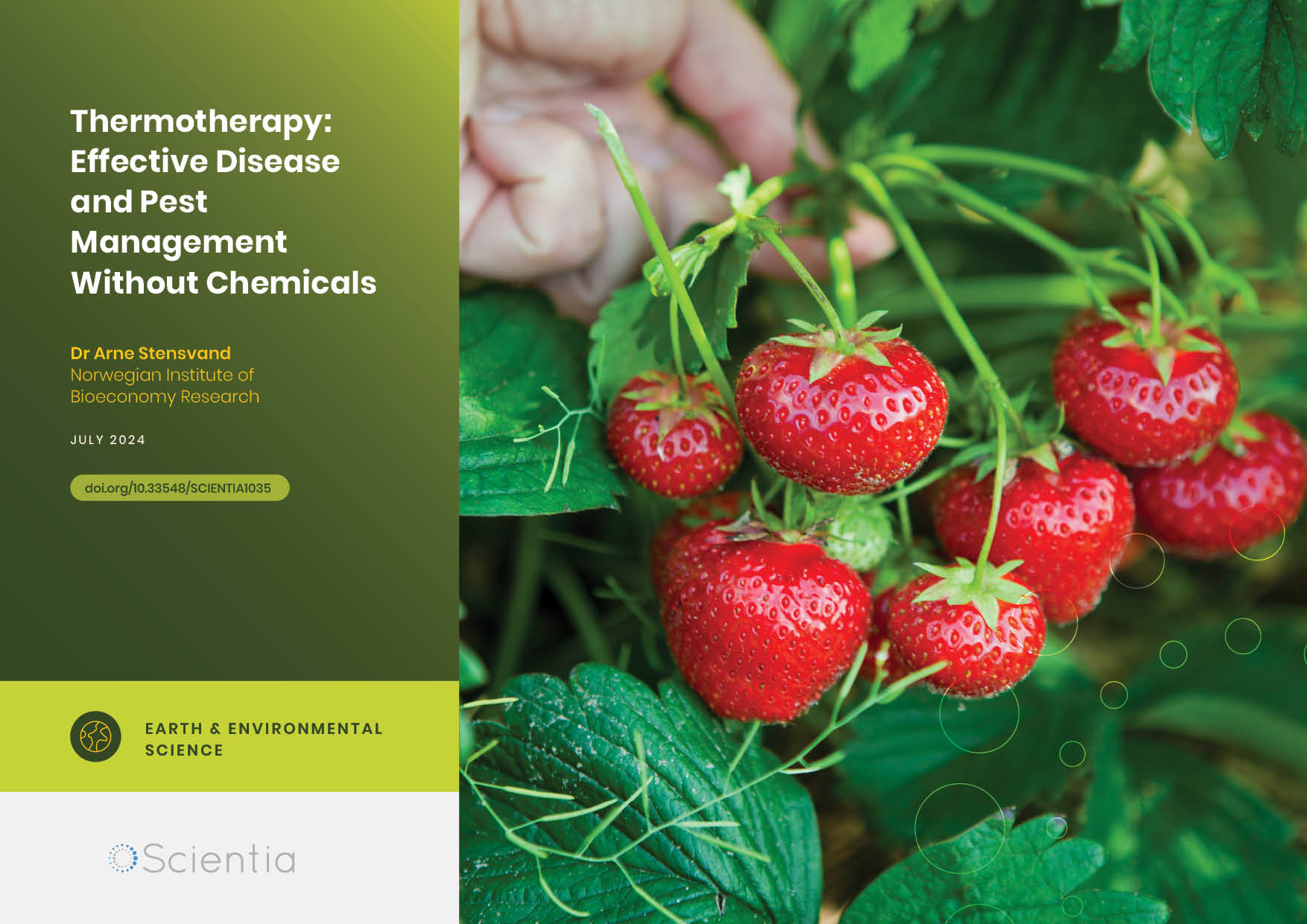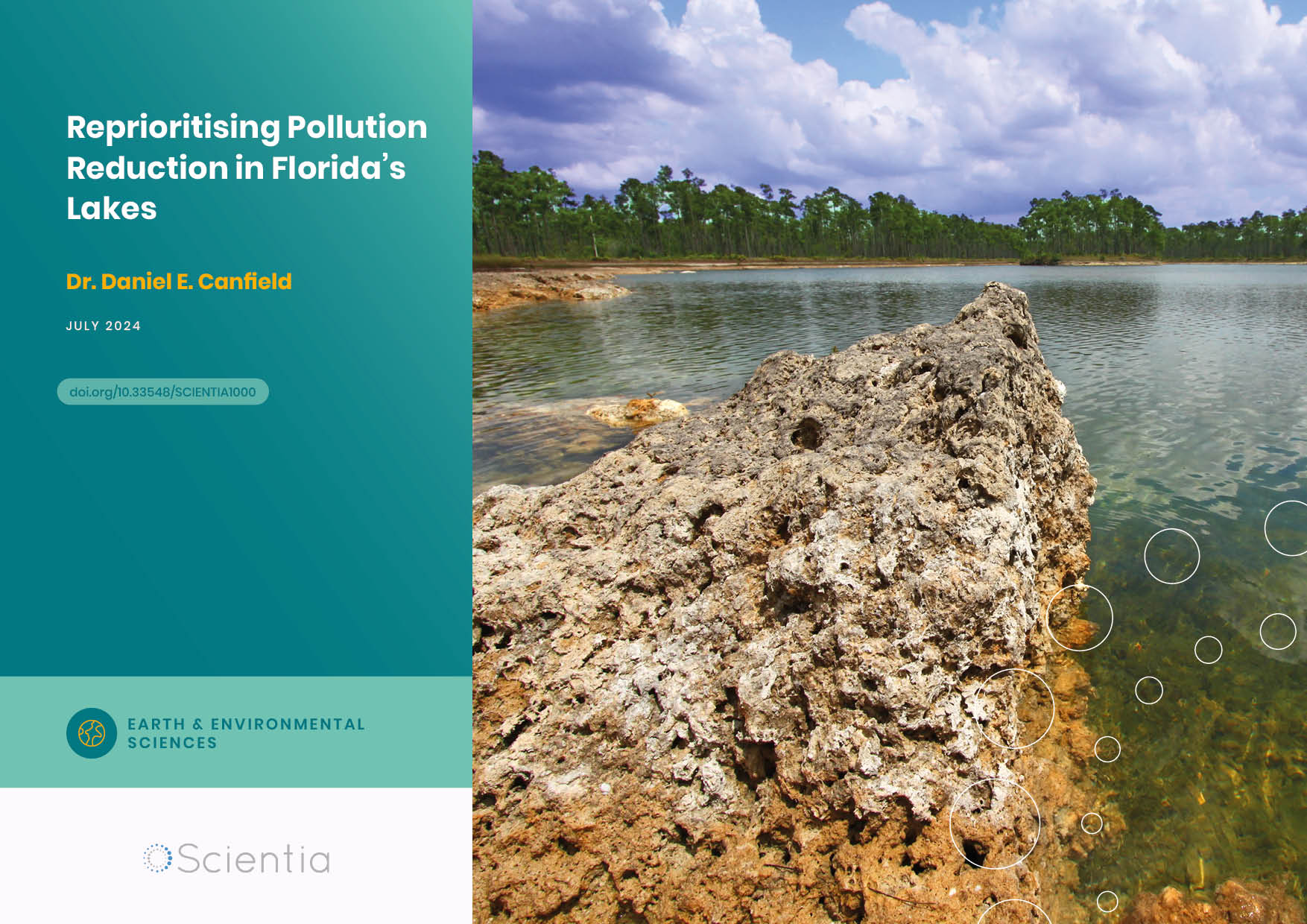Dr Richard Marchant | Caddisflies and the Health of Freshwater Ecosystems
Caddisflies are an order of insect species that live in and around fresh water, and are a great indicator of the health of the ecosystem they’re in. However, we need a better understanding of their life cycles, their role in the ecosystem, and how the population changes across multiple generations as they hatch from eggs into larvae, grow and moult, and form pupae before their adult stage. Dr Richard Marchant at Australia’s Museums Victoria has undertaken an extensive 5-year research program to do just that.
Understanding Population Dynamics
Freshwater insects are a crucial part of many ecosystems but detailed knowledge of how populations fluctuate in numbers has seldom been considered in the published research. Dr Richard Marchant at Australia’s largest public museum organisation, Museums Victoria, has been addressing this gap in the literature by studying the long-term population dynamics of two species of caddisfly, Tasimia palpata and Agapetus kimminsi, in the Cumberland River in south-western Victoria, Australia.
Caddisflies are insects of the order Trichoptera, meaning ‘hairy-winged’, due to the adults having moth-like bristled wings. Indeed, caddisflies are more closely related to butterflies and moths than to so-called ‘true flies’. They have a unique life cycle, which has stages both above and below the water. This means they’re a great indicator of the overall health of a freshwater ecosystem, but it also means that understanding caddisfly populations requires dedicated and long-term study to successfully track the eggs, larvae, pupa, and adult caddisflies over the span of several generations.
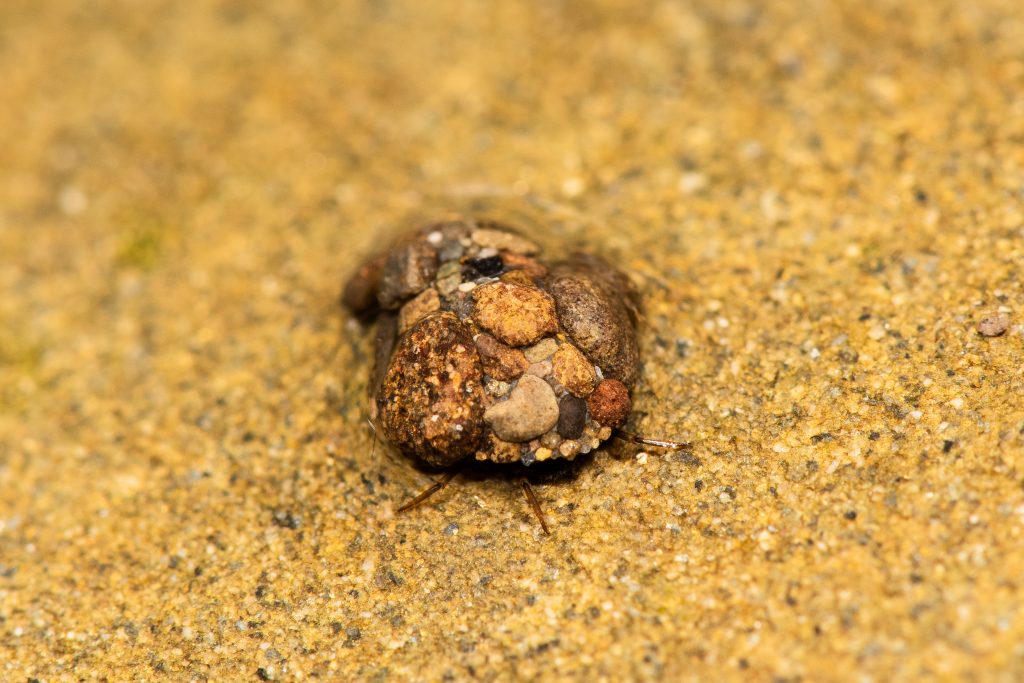
Tasimia palpata larva. Credit: Dr Julian Finn / Museums Victoria
Dr Marchant is especially interested in density-dependent processes in controlling the fluctuations of populations. For example, some dynamics depend only on the total number of caddisflies in an ecosystem, but some, such as resource competition, depend more strongly on their density: how many caddisflies are in each square metre of river? How does their density affect egg-laying? How dense can populations be before recruitment to the next generation is reduced as a result?
Dr Marchant explains that he wanted to find out which life history phases were density dependent. More specifically, he reasons, that if direct density dependence occurs, mortality during a phase of the life cycle should be positively correlated with the density of individuals entering that phase. In other words, if one phase strongly depends on density, we should see a clear negative relationship between the success of individuals in that phase and the density of individuals at the beginning of that phase.
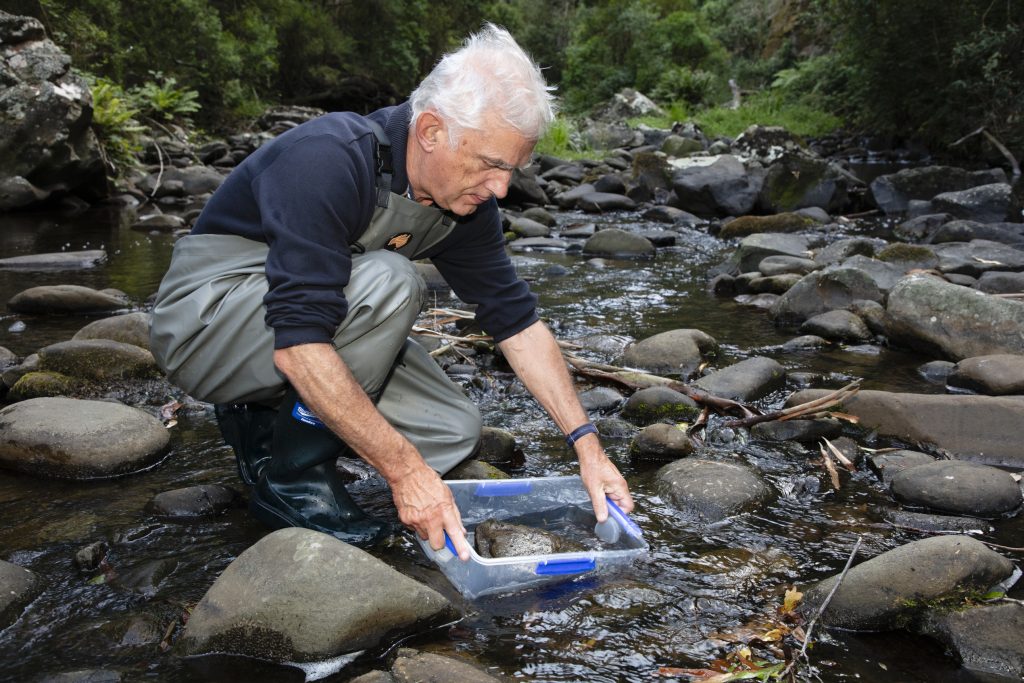
Dr Richard Marchant at Cumberland River. Credit Rodney Start / Museums Victoria
The Unique Life Cycle of Caddisflies
Caddisflies go through several distinct phases in their life cycle, so understanding how the population changes over time is critical. Although one of the two species has been studied previously, Tasimia palpata had not, so Dr Marchant undertook an 18-month preliminary study at the river. This revealed the species was bivoltine, meaning two generations are produced each year – one in winter and one in summer.
The larvae are aquatic and have gills. The adults lay eggs in clumps or masses below the water surface, often underneath rocks, which presumably offers some protection against predation. Once hatched, different species behave quite differently. Most are collector-gatherers, grabbing fragments of detritus and organic matter that float in the water. Some other species sieve the water using silken nets. The two species in this study feed predominantly on benthic algae, photosynthesising microbes which grow on the surface of rocks.
Another unique aspect of caddisfly larvae is that they build their own homes: these are called ‘cases’ and are tubular structures formed from silk and reinforced with species-specific additions such as sand, bark, sticks, leaves, seeds and shells. These cases are open at both ends, and the larva adds to the case at one end and turns round and trims the rear. To keep oxygenated water flowing through the case, the larva moves around, and the less oxygen in the water the more active the larva must be. This means caddisfly larvae can live in water that’s too oxygen-poor for other species like stoneflies or mayflies.
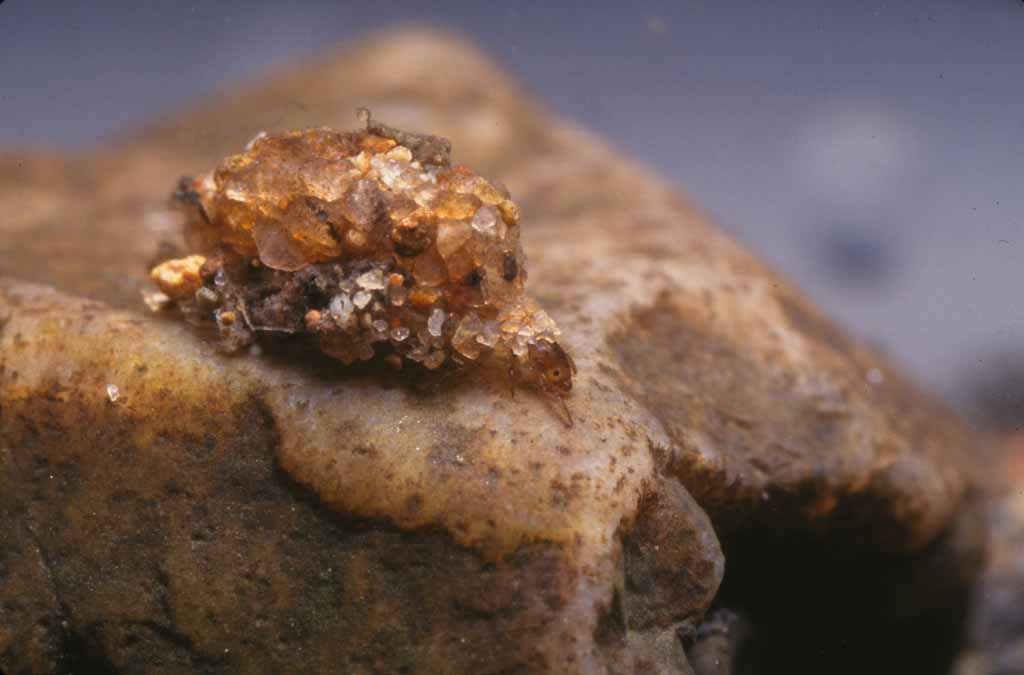
Agapetus kimminsi larva. Credit: John Gooderham and Edward Tsyrlin / The Water Bug Book
This means that the presence of caddisflies when stoneflies and mayflies are absent can tell us that the freshwater ecosystem is low on oxygen, but not critically low. As well as an indicator of pollution-free water, caddisflies are an important part of the food web, as both larvae and adults are a popular food source for fish, especially newly hatched adults which must clamber out of the water and dry their wings before they can fly.
Studying the population dynamics of large organisms requires years of tracking, but insects go through generations remarkably quickly. Thus, Dr Marchant was able to study ten consecutive generations over 5 years, taking 21 samples each month from April 2004 to March 2009. These were sampled from a 190-metre-long section of the Cumberland River in south-western Victoria, Australia.
Dr Marchant studied the density of the population at specific stages to identify trends. For example, the number of caddisflies per square meter at the start of a generation represented the density of larval recruits, while the density when pupa were common represented the density at the end of a generation. Finally, the density of eggs laid by each generation was determined from pupal densities, the development time of pupae, and egg numbers per female.
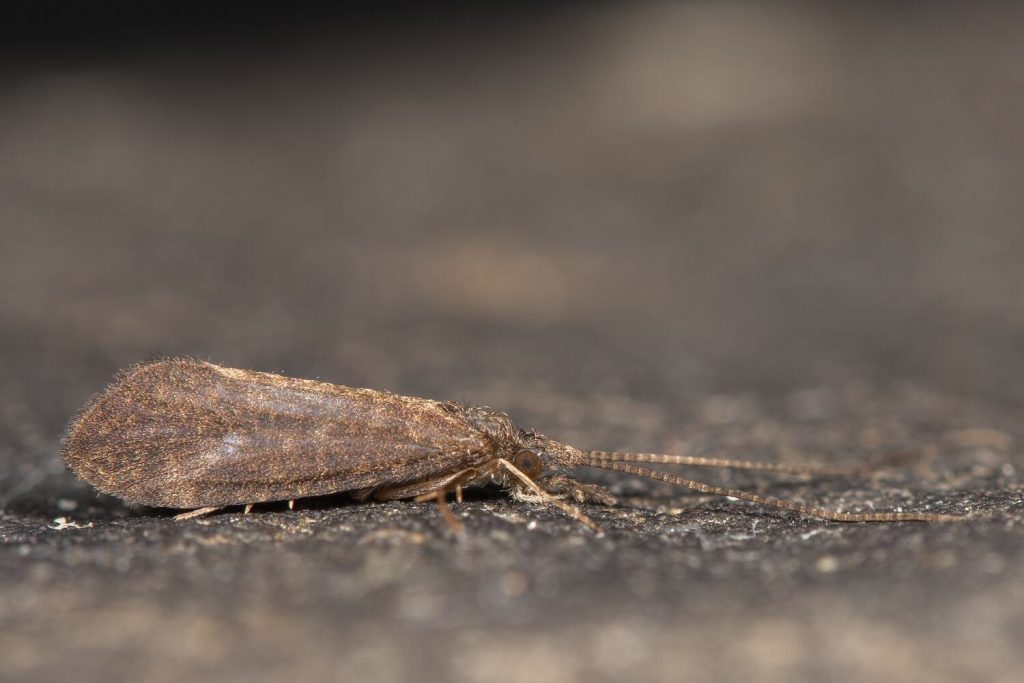
Tasimia palpata (adult male). Credit Dr Julian Finn/Museums Victoria
Mathematical Modeling of Population Dynamics
Since insect populations follow regular cycles, their dynamics can be modelled using relatively simple mathematical tools. In his paper, Dr Marchant analysed the data he collected using a Ricker stock-recruitment curve. This is a model used to predict how many new individuals are born, mature, or immigrate (recruited) in each generation based on the numbers in the previous generation (stock).
Interestingly, this curve was an excellent fit for the larval recruitment of one of the studied species but not the other. The recruitment of Tasimia palpata matched the model nearly perfectly, but that of Agapetus kimminsi deviated significantly from the model, suggesting other mechanisms are at play in their population.
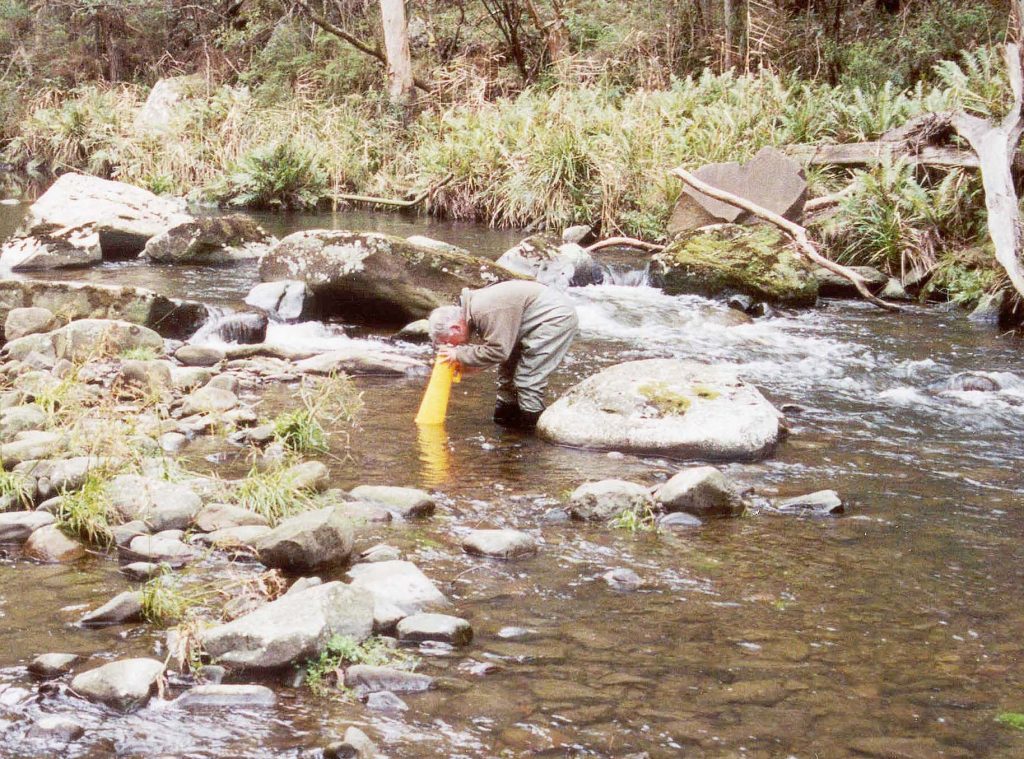
Counting caddis larvae using a viewing tube. Credit Peter Lillywhite / Museums Victoria
Further, both species displayed strong density dependence but in different manners. Tasimia palpata showed much higher density-dependent mortality during pupation and recruitment, meaning that the population dynamics were more strongly determined by the reproductive phases of the cycle. In contrast, Agapetus kimminsi only showed density-dependent mortality during the larval phase, which was independent of the fluctuations in the density of eggs. In both cases, these density effects were direct, meaning they relied most on the density of individuals at the start of that life phase, and much less on the phases before that (which would imply a delayed or indirect relationship).
Crucially, these findings confirm Dr Marchant’s argument that long-term study is necessary to properly understand the population dynamics of these caddisfly species. His research provides a critical new insight into their ecology emphasizing the vital role of density-dependent regulating factors in their life cycles.
SHARE
DOWNLOAD E-BOOK
REFERENCE
https://doi.org/10.33548/SCIENTIA893
MEET THE RESEARCHER

Dr Richard Marchant
Department of Entomology, Museums Victoria
Melbourne, Victoria
Australia
Dr Richard Marchant studies the ecology of aquatic insects and other invertebrates inhabiting rivers, particularly their species composition, diversity and population dynamics. He began his research career almost 50 years ago by studying the dynamics of brine shrimp populations in salt lakes in Western Victoria, Australia. He then spent several years investigating the feeding and population ecology of riverine amphipods in Ontario, Canada and the composition of tropical invertebrates in billabongs in Kakadu National Park, part of the Northern Territory. Since arriving at the Museum of Victoria 40 years ago, he has conducted much fieldwork on stream invertebrate communities in Victoria and Southern New South Wales, and has examined the stream invertebrates of the isolated sub-Antarctic island, Macquarie. He is the editor of the Memoirs of Museum Victoria, the museum’s scientific journal, and is an associate editor of Marine and Freshwater Research.
CONTACT
E: rmarch@museum.vic.gov.au
W: https://museumsvictoria.com.au/about-us/staff/dr-richard-marchant/
KEY COLLABORATORS
Professor Barbara Downes and Dr Jill Lancaster, University of Melbourne, Australia
FUNDING
Science Department, Museum Victoria Research Institute
FURTHER READING
R Marchant, Long-term fluctuations in density of two species of caddisfly from south-east Australia and the importance of density-dependent mortality, Freshwater Biology, 2021, 66, 2133–2144. DOI: https://doi.org/10.1111/fwb.13821

REPUBLISH OUR ARTICLES
We encourage all formats of sharing and republishing of our articles. Whether you want to host on your website, publication or blog, we welcome this. Find out more
Creative Commons Licence (CC BY 4.0)
This work is licensed under a Creative Commons Attribution 4.0 International License. 
What does this mean?
Share: You can copy and redistribute the material in any medium or format
Adapt: You can change, and build upon the material for any purpose, even commercially.
Credit: You must give appropriate credit, provide a link to the license, and indicate if changes were made.
SUBSCRIBE NOW
Follow Us
MORE ARTICLES YOU MAY LIKE
Dr Robert Larkin | Cultivating Change to Improve Soil Health and Increase Potato Yield
Environmental quality and food production are facing the pressing challenges of climate change and global population growth. Dr Robert Larkin from the United States Department of Agriculture-Agricultural Research Service (USDA-ARS) and a team of plant scientists developed and tested a range of crop management systems to help overcome these compounding challenges. Their work is improving soil health and increasing the yield of potato crops, contributing to the future food security of nations.
Dr Arne Stensvand | Thermotherapy: Effective Disease and Pest Management Without Chemicals
Dr Arne Stensvand and his team at the Norwegian Institute of Bioeconomy Research are developing physical methods of pest reduction in plants. The team is specifically interested in strawberry plants, for which pest management is vital for crop success. They are pioneering thermotherapy as a heat treatment method to provide an environmentally effective and economically sound non-chemical approach to pest management.
Dr. Daniel Canfield | Reprioritising Pollution Reduction in Florida’s Lakes
Florida’s landscape is dotted with thousands of lakes that reflect regional geology, topography and anthropogenic activities. Phosphorus and nitrogen are critical nutrients for maintaining the wide range of biological production expressed across Florida, but excessive inputs of these nutrients due to past human activities impair many waters. There has been a long history of work aiming to address associated water quality pressures, and Dr. Daniel Canfield at the University of Florida has been at the centre of these efforts for over 40 years. Now, with the correction of point-source nutrient inputs, Dr. Canfield proposes that holistic lake management, including the integration of in-lake management strategies with a focus on organic sediment removal, should be much more prominent on the US government’s agenda to provide faster restoration of stakeholders’ lake usability.
Dr Jon Tore Lieng | Dynamically Installed Anchors for Floating Offshore Turbines
Effectively harnessing offshore wind presents a valuable opportunity to increase energy supplies. Floating wind turbines present several advantages over traditional fixed turbines in more shallow waters. Dr Jon Tore Lieng from Deep Sea Anchors and colleagues have developed a type of dynamically installed anchor to hold the structures in place while reducing both the costs and complexity associated with installation where cohesive seabed sediments are realised.

